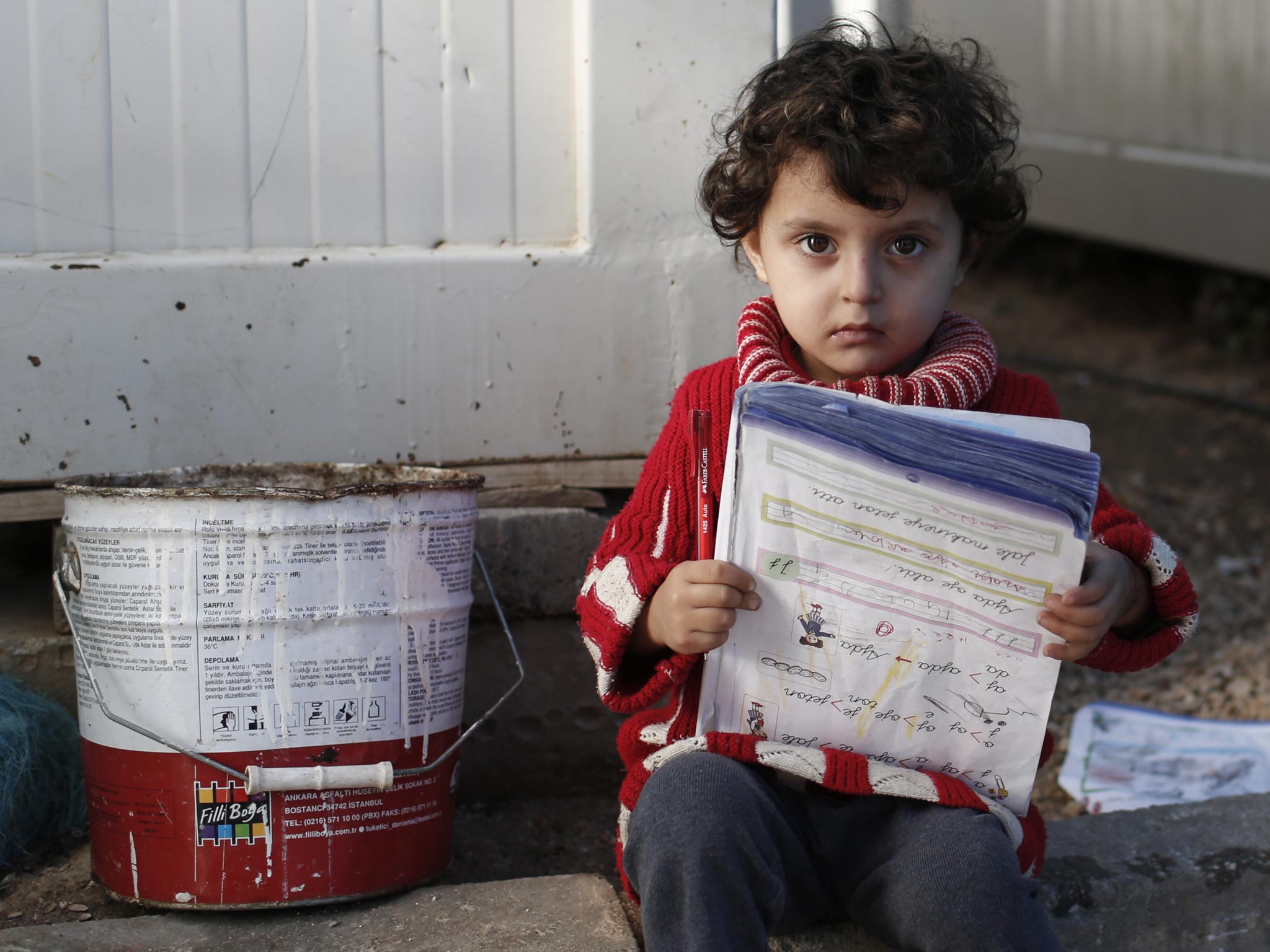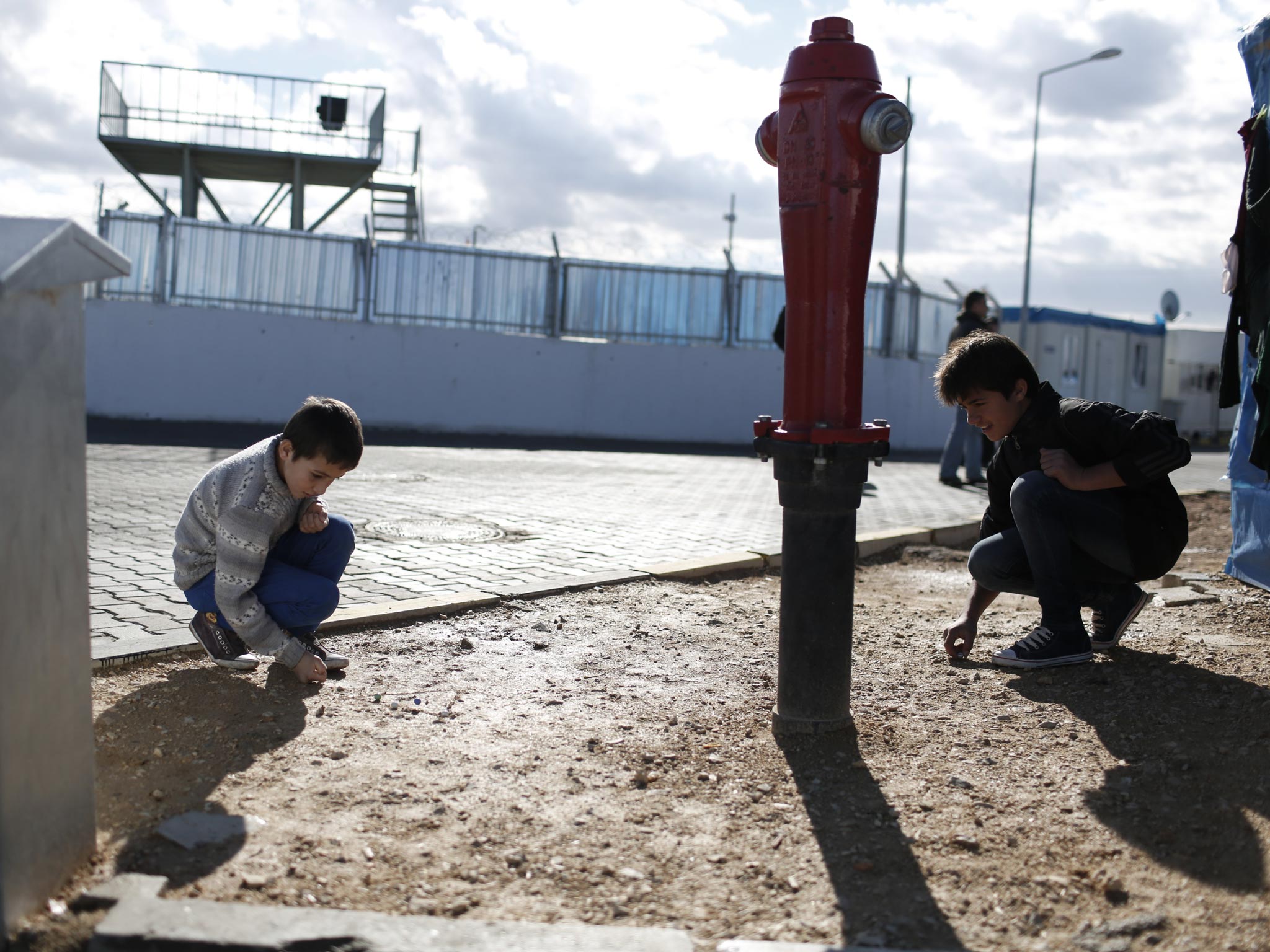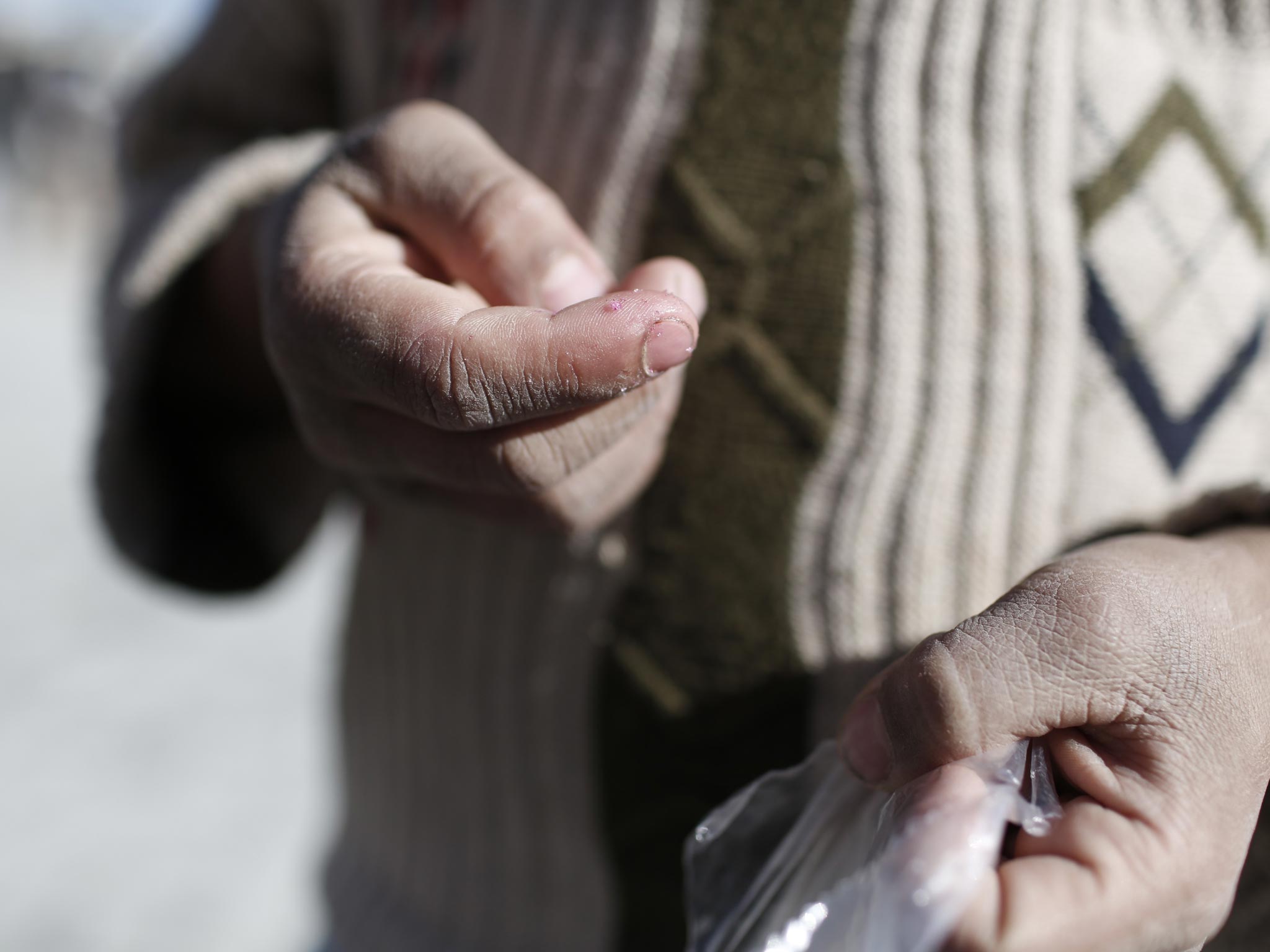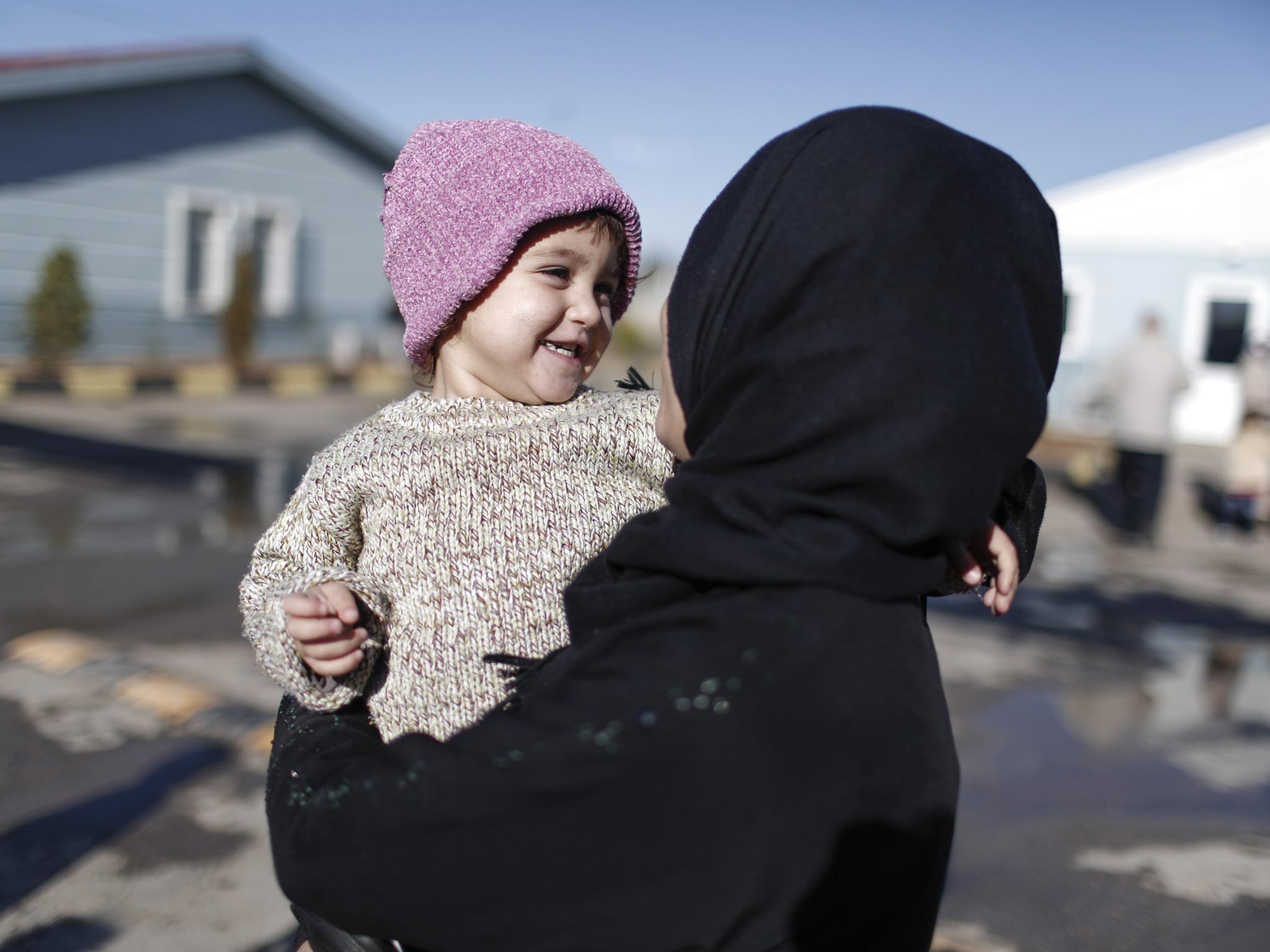The Syrian children of the Kilis refugee camp: ‘We tell them not to worry, it’s far away, but they get scared’
Teachers inside a Turkish refugee camp for Syrians displaced by the near three-year civil war are becoming increasingly concerned that images of bloodshed witnessed by children will have a lasting impact. Richard Hall reports from Kilis
Your support helps us to tell the story
From reproductive rights to climate change to Big Tech, The Independent is on the ground when the story is developing. Whether it's investigating the financials of Elon Musk's pro-Trump PAC or producing our latest documentary, 'The A Word', which shines a light on the American women fighting for reproductive rights, we know how important it is to parse out the facts from the messaging.
At such a critical moment in US history, we need reporters on the ground. Your donation allows us to keep sending journalists to speak to both sides of the story.
The Independent is trusted by Americans across the entire political spectrum. And unlike many other quality news outlets, we choose not to lock Americans out of our reporting and analysis with paywalls. We believe quality journalism should be available to everyone, paid for by those who can afford it.
Your support makes all the difference.Walking through the steel turnstiles at the entrance of the Kilis refugee camp on Turkey’s border with Syria, it is the children that you notice first.
Click here or on 'view gallery' to see more images
Dozens of young kids dart back and forth across the narrow gaps between grey containers that stretch into the distance. They kick balls against the tall, metallic perimeter fence and throw marbles on the kerbside while their parents watch. There are 7,000 Syrian children living in this camp of 15,000 people. They are the lucky ones, we are told. While many are still trapped inside Syria, the people here have escaped to the safety of a well-equipped and modern camp funded generously by the Turkish government.
But for the children old enough to remember why they fled, the damage may have already been done. Teachers and aid agencies working in the Kilis camp are concerned about the psychological effect of the war on Syria’s young – a generation that may forever be scarred.
“The war is imprinted on their minds,” says Hassan, an IT teacher in the camp. “They are always talking about the things they saw – the bombs and explosions. I am becoming more and more concerned about it. They remember everything.”

Many of the children are withdrawn and quiet, camp volunteers say. When they are encouraged to talk about what is troubling them, the stories they tell are shocking.
“One of the children, a young girl, was not interested in her work. She just sat there very quiet during class,” says Sara, a 24-year-old English teacher who lives and works in the camp. “When I asked her what was making her sad she said that her father was hit by a rocket and his arm was severed. She ran to him after it happened and watched him die. She told me that she wanted to go back and get revenge; to become a martyr.”
The camp is a hive of activity during the day. A market subsidised by the World Food Programme sits in the middle of the site.
There are three schools and even a playground for the children – a far cry from the muddy roadside available to the kids whose families fled to Lebanon. But the war is never far away.
Overlooking the sprawling camp is a large hill dotted with small trees. The imposing mound lies across the border in Syria. Sometimes at night the flash of gunfire streaks across the sky while loud booms echo in the distance.
“We tell them not to worry, that it is far away, but sometimes they still get scared,” Sara says.
A little way down the road in Kilis town, which camp residents are free to visit when they please, a few children can be seen searching through the rubbish at the side of the road, filling bags with whatever scraps they find, perhaps to sell for loose change. They are the minority in Kilis. Things are much worse for Syria’s children elsewhere.

More than one million kids have fled Syria and registered as refugees, according to the United Nations International Children’s Emergency Fund (UNICEF).
Around 294,000 of them came to Turkey, while others fled to neighbouring Lebanon, Jordan and Iraq, while a further two million have been displaced inside the country.
Jordan’s Zaatari refugee camp is home to 130,000 residents, 65 per cent of whom are under 18. More than 300 children living in the camp have been treated for Post-Traumatic Stress Disorder (PTSD), according to the UN, which warns that many more may be suffering in silence.
In Kilis, the children are free to attend school up until the age of 16. Elsewhere, they are forced to earn money to support their families. UNICEF estimates one in every 10 Syrian refugee children in the region is working.
A report issued last month by UNHCR, the UN refugee agency, found that in both Jordan and Lebanon, children as young as seven years old are working long hours for little pay as labourers, on farms and street stands, sometimes in dangerous or exploitative conditions. The majority of working children are boys.

The same report documented the psychological distress suffered by children who had fled the war, some of whom had been separated from their parents.
“The pressures of displacement and dramatic changes in lifestyle lead many Syrian refugee children to feel isolated and insecure, both within and outside their homes. Children, particularly girls, are often kept at home for their safety. However, the stressful and uneasy environment in which many refugee families live can also trigger tension and violence in the home,” it said.
The children rarely share their fears with their parents, Sara says, much less with visiting journalists.
Fifteen-year-old Ibrahim arrived in Turkey at the beginning of the war, but he still remembers why his family left.
“We used to run from one side of the road to the other to avoid the bullets,” he says shyly. “There were rockets too.”
Asked if he would like to go home he says: “We miss it. But it will be a long time before it is better.”

Join our commenting forum
Join thought-provoking conversations, follow other Independent readers and see their replies
Comments